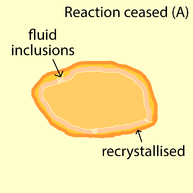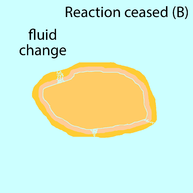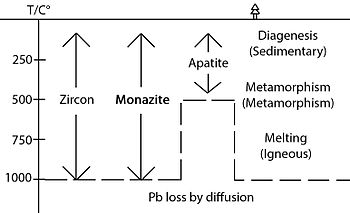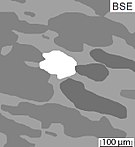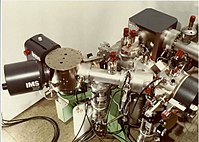Sick building syndrome (SBS) is a medical condition where people in a building suffer from symptoms of illness or feel unwell for no apparent reason.
The symptoms tend to increase in severity with the time people spend
in the building, and improve over time or even disappear when people are
away from the building. The main identifying observation is an
increased incidence of complaints of symptoms such as headache, eye,
nose, and throat irritation, fatigue, and dizziness and nausea.
These symptoms appear to be linked to time spent in a building, though
no specific illness or cause can be identified. SBS is also used
interchangeably with "building-related symptoms", which orients the name
of the condition around patients rather than a "sick" building. A 1984
World Health Organization (WHO) report suggested up to 30% of new and remodeled buildings worldwide may be subject of complaints related to poor indoor air quality.
Sick building causes are frequently pinned down to flaws in the heating, ventilation, and air conditioning (HVAC) systems. However, there have been inconsistent findings on whether air conditioning systems result in SBS or not. Other causes have been attributed to contaminants produced by outgassing of some types of building materials, volatile organic compounds (VOC), molds (see mold health issues), improper exhaust ventilation of ozone (byproduct of some office machinery), light industrial chemicals used within, or lack of adequate fresh-air intake/air filtration.
Sick building causes are frequently pinned down to flaws in the heating, ventilation, and air conditioning (HVAC) systems. However, there have been inconsistent findings on whether air conditioning systems result in SBS or not. Other causes have been attributed to contaminants produced by outgassing of some types of building materials, volatile organic compounds (VOC), molds (see mold health issues), improper exhaust ventilation of ozone (byproduct of some office machinery), light industrial chemicals used within, or lack of adequate fresh-air intake/air filtration.
Signs and symptoms
Human exposure to bioaerosols has been documented to give rise to a variety of adverse health effects. Building occupants complain of symptoms such as sensory irritation of the eyes, nose, or throat; neurotoxic or general health problems; skin irritation; nonspecific hypersensitivity reactions; infectious diseases; and odor and taste sensations. Exposure to poor lighting conditions has led to general malaise.
Extrinsic allergic alveolitis has been associated with the presence of fungi and bacteria in the moist air of residential houses and commercial offices. A very large 2017 Swedish study correlated several inflammatory diseases of the respiration tract with objective evidence of damp-caused damage in homes.
The WHO has classified the reported symptoms into broad
categories, including: mucous membrane irritation (eye, nose, and throat
irritation), neurotoxic effects (headaches, fatigue, and irritability),
asthma and asthma-like symptoms (chest tightness and wheezing), skin
dryness and irritation, gastrointestinal complaints and more.
Several sick occupants may report individual symptoms which do
not appear to be connected. The key to discovery is the increased
incidence of illnesses in general with onset or exacerbation within a
fairly close time frame—usually within a period of weeks. In most cases,
SBS symptoms will be relieved soon after the occupants leave the
particular room or zone. However, there can be lingering effects of various neurotoxins,
which may not clear up when the occupant leaves the building. In some
cases—particularly in sensitive individuals—there can be long-term
health effects.
Causes
It has been
suggested that sick building syndrome could be caused by inadequate
ventilation, deteriorating fiberglass duct liners, chemical contaminants
from indoor or outdoor sources, and biological contaminants, air
recycled using fan coils, traffic noise, poor lighting, and buildings
located in a polluted urban area.
Many volatile organic compounds, which are considered chemical
contaminants, can cause acute effects on the occupants of a building.
"Bacteria, molds, pollen, and viruses are types of biological
contaminants" and can all cause SBS. In addition, pollution from
outdoors, such as motor vehicle exhaust, can contribute to SBS. Adult SBS symptoms were associated with a history of allergic rhinitis, eczema and asthma.
A 2015 study concerning the association of SBS and indoor air pollutants in office buildings in Iran found as carbon dioxide levels increase in a building, symptoms like nausea, headaches, nasal irritation, dyspnea, and throat dryness have also been shown to increase.
Certain work conditions have been found to be correlated with specific
symptoms. For example, higher light intensity was significantly related
to skin dryness, eye pain, and malaise.
Higher temperature has also been found to correlate with symptoms such
as sneezing, skin redness, itchy eyes and headache, while higher
relative humidity has been associated with sneezing, skin redness, and
pain of the eyes.
ASHRAE has recognized that polluted urban air, designated within the United States Environmental Protection Agency (EPA)'s air quality ratings as unacceptable requires the installation of treatment such as filtration for which the HVAC practitioners generally apply carbon-impregnated filters and their like.
In 1973, in response to the 1973 oil crisis and conservation
concerns, ASHRAE Standards 62-73 and 62-81 reduced required ventilation
from 10 cubic feet per minute (4.7 L/s) per person to 5 cubic feet per
minute (2.4 L/s) per person, but this was found to be a contributing
factor to sick building syndrome.
As of the 2016 revision, ASHRAE ventilation standards call for 5 to 10
cubic feet per minute of ventilation per occupant (depending on the
occupancy type) in addition to ventilation based on the zone floor area
delivered to the breathing zone.
Psychological factors
One
study looked at commercial buildings and their employees, comparing
some environmental factors suspected of inducing SBS to a self-reported
survey of the occupants, finding that the measured psycho-social circumstances appeared more influential than the tested environmental factors. The list of environmental factors in the study can be found here.
Limitations of the study include that it only measured the indoor
environment of commercial buildings, which have different building codes
than residential buildings, and that the assessment of building
environment was based on layman observation of a limited number of
factors.
Research has shown that SBS shares several symptoms common in
other conditions thought to be at least partially caused by
psychosomatic tendencies. The umbrella term "autoimmune/inflammatory syndrome induced by adjuvants" has been suggested. Other members of the suggested group include Silicosis, Macrophagic myofascitis, Gulf War syndrome, Post-vaccination phenomena.
Workplace
Greater
effects were found with features of the psychosocial work environment
including high job demands and low support. The report concluded that
the physical environment of office buildings appears to be less
important than features of the psychosocial work environment in
explaining differences in the prevalence of symptoms. However, there is
still a relationship between sick building syndrome and symptoms of
workers regardless of workplace stress.
Excessive work stress or dissatisfaction, poor interpersonal
relationships and poor communication are often seen to be associated
with SBS, recent studies show that a combination of environmental
sensitivity and stress can greatly contribute to sick building syndrome.
Specific work-related stressors are related with specific SBS
symptoms. Workload and work conflict are significantly associated with
general symptoms (headache, abnormal tiredness, sensation of cold or
nausea). While crowded workspaces and low work satisfaction are
associated with upper respiratory symptoms.
Specific careers are also associated with specific SBS symptoms.
Transport, communication, healthcare, and social workers have highest
prevalence of general symptoms. Skin symptoms such as eczema, itching,
and rashes on hands and face are associated with technical work.
Forestry, agriculture, and sales workers have the lowest rates of sick
building syndrome symptoms.
Milton et al. determined the cost of sick leave specific for one
business was an estimated $480 per employee, and about five days of sick
leave per year could be attributed to low ventilation rates. When
comparing low ventilation rate areas of the building to higher
ventilation rate areas, the relative risk of short-term sick leave was
1.53 times greater in the low ventilation areas.
Work productivity has been associated with ventilation rates, a
contributing factor to SBS, and there's a significant increase in
production as ventilation rates increase, by 1.7% for every two-fold
increase of ventilation rate.
Home
Sick building syndrome can also occur due to factors of the home. Laminated flooring can cause more exposure to chemicals and more resulting SBS symptoms compared to stone, tile, and cement flooring.
Recent redecorating and new furnishings within the last year were also
found to be associated with increased symptoms, along with dampness and
related factors, having pets, and the presence of cockroaches.
The presence of mosquitoes was also a factor related to more symptoms,
though it is unclear whether it was due to the presence of mosquitoes or
the use of repellents.
Diagnosis
While
sick building syndrome (SBS) encompasses a multitude of non-specific
symptoms, building-related illness (BRI) comprises specific, diagnosable
symptoms caused by certain agents (chemicals, bacteria, fungi, etc.).
These can typically be identified, measured, and quantified. There are usually 4 causal agents in BRI; 1.) Immunologic, 2.) Infectious, 3.) toxic, and 4.) irritant. For instance, Legionnaire's disease, usually caused by Legionella pneumophila,
involves a specific organism which could be ascertained through
clinical findings as the source of contamination within a building. SBS
does not have any known cure; alleviation consists of removing the
affected person from the building associated with non-specific symptoms.
BRI, on the other hand, utilizes treatment appropriate for the
contaminant identified within the building (e.g., antibiotics for
Legionnaire's disease). In most cases, simply improving the indoor air
quality (IAQ) of a particular building will attenuate, or even
eliminate, the acute symptoms of SBS, while removal of the source
contaminant would prove more effective for a specific illness, as in the
case of BRI.
Building-Related Illness is vital to the overall understanding of Sick
Building Syndrome because BRI illustrates a causal path to infection,
theoretically. Office BRI may more likely than not be explained by three
events: “Wide range in the threshold of response in any population
(susceptibility), a spectrum of response to any given agent, or
variability in exposure within large office buildings."
Isolating any one of the three aspects of office BRI can be a great
challenge, which is why those who find themselves with BRI should take
three steps, history, examinations, and interventions. History describes
the action of continually monitoring and recording the health of
workers experiencing BRI, as well as obtaining records of previous
building alterations or related activity. Examinations go hand in hand
with monitoring employee health. This step is done by physically
examining the entire workspace and evaluating possible threats to health
status among employees. Interventions follow accordingly based off the
results of the Examination and History report.
Prevention
- Toxin-absorbing plants, such as sansevieria.
- Roof shingle non-pressure cleaning for removal of algae, mold, and Gloeocapsa magma.
- Using ozone to eliminate the many sources, such as VOC, molds, mildews, bacteria, viruses, and even odors. However, numerous studies identify High-ozone shock treatment as ineffective despite commercial popularity and popular belief.
- Replacement of water-stained ceiling tiles and carpeting.
- Only using paints, adhesives, solvents, and pesticides in well-ventilated areas or only using these pollutant sources during periods of non-occupancy.
- Increasing the number of air exchanges; the American Society of Heating, Refrigeration and Air-Conditioning Engineers recommend a minimum of 8.4 air exchanges per 24-hour period.
- Proper and frequent maintenance of HVAC systems.
- UV-C light in the HVAC plenum.
- Installation of HVAC Air Cleaning systems or devices to remove VOC's, bioeffluents (people odors) from HVAC systems conditioned air.
- Regular vacuuming with a HEPA filter vacuum cleaner to collect and retain 99.97% of particles down to and including 0.3 micrometers.
- Place bedding in sunshine, which is related to a study done in a high-humidity area where damp bedding was common and associated with SBS.
- Increased ventilation rates that are above the minimum guidelines.
- Lighting in the workplace should be designed to give individuals control, and be natural when possible.
Epidemiology
Some
studies have shown a small difference between genders, with women
having slightly higher reports of SBS symptoms compared to men.
However, many other studies have shown an even higher difference in the
report of sick building syndrome symptoms in women compared to men. It is not entirely clear, however, if this is due to biological, social, or occupational factors.
A 2001 study published in the Journal Indoor Air 2001 gathered
1464 office-working participants to increase the scientific
understanding of gender differences under the Sick Building Syndrome
phenomenon.
Using questionnaires, ergonomic investigations, building evaluations,
as well as physical, biological, and chemical variables, the
investigators obtained results that compare with past studies of SBS and
gender. The study team found that across most test variables,
prevalence rates were different in most areas, but there was also a deep
stratification of working conditions between genders as well. For
example, men’s workplace tend to be significantly larger and have all
around better job characteristics. Secondly, there was a noticeable
difference in reporting rates, finding that women have higher rates of
reporting roughly 20% higher than men. This information was similar to
that found in previous studies, indicating a potential difference in
willingness to report.
There might be a gender
difference in reporting rates of sick building syndrome because women
tend to report more symptoms than men do. Along with this, some studies
have found that women have a more responsive immune system and are more
prone to mucosal dryness and facial erythema.
Also, women are alleged by some to be more exposed to indoor
environmental factors because they have a greater tendency to have
clerical jobs, wherein they are exposed to unique office equipment and
materials (example: blueprint machines), whereas men often have jobs based outside of offices.
History
In the late 1970s, it was noted that nonspecific symptoms were
reported by tenants in newly constructed homes, offices, and nurseries.
In media it was called "office illness". The term "Sick Building
Syndrome" was coined by the WHO in 1986, when they also estimated that
10-30% of newly built office buildings in the West had indoor air
problems. Early Danish and British studies reported symptoms.
Poor indoor environments attracted attention. The Swedish allergy
study (SOU 1989:76) designated "sick building" as a cause of the
allergy epidemic as was feared. In the 1990s, therefore, extensive
research into "sick building" was carried out. Various physical and
chemical factors in the buildings were examined on a broad front.
The problem was highlighted increasingly in media and was
described as a "ticking time bomb". Many studies were performed in
individual buildings.
In the 1990s "sick buildings" were contrasted against "healthy buildings".
The chemical contents of building materials were highlighted. Many
building material manufacturers were actively working to gain control of
the chemical content and to replace criticized additives. The
ventilation industry advocated above all more well-functioning
ventilation. Others perceived ecological construction, natural
materials, and simple techniques as a solution.
At the end of the 1990s came an increased distrust of the concept of "sick building". A dissertation at the Karolinska Institutet
in Stockholm 1999 questioned the methodology of previous research, and a
Danish study from 2005 showed these flaws experimentally. It was
suggested that sick building syndrome was not really a coherent syndrome
and was not a disease to be individually diagnosed. In 2006 the Swedish
National Board of Health and Welfare recommended in the medical journal
Läkartidningen
that "sick building syndrome" should not be used as a clinical
diagnosis. Thereafter, it has become increasingly less common to use
terms such as "sick buildings" and "sick building syndrome" in research.
However, the concept remains alive in popular culture and is used to
designate the set of symptoms related to poor home or work environment
engineering. "Sick building" is therefore an expression used especially
in the context of workplace health.
Sick building syndrome made a rapid journey from media to
courtroom where professional engineers and architects became named
defendants and were represented by their respective professional
practice insurers. Proceedings invariably relied on expert witnesses,
medical and technical experts along with building managers, contractors
and manufacturers of finishes and furnishings, testifying as to cause
and effect. Most of these actions resulted in sealed settlement
agreements, none of these being dramatic. The insurers needed a defense
based upon Standards of Professional Practice to meet a court decision
that declared—that in a modern, essentially sealed building, the HVAC
systems must produce breathing air for suitable human consumption.
ASHRAE (American Society of Heating, Refrigeration and Air Conditioning
Engineers, currently with over 50,000 international members) undertook
the task of codifying its IAQ (Indoor Air Quality) standard.
ASHRAE empirical research determined that "acceptability" was a
function of outdoor (fresh air) ventilation rate and used carbon dioxide
as an accurate measurement of occupant presence and activity. Building
odors and contaminants would be suitably controlled by this dilution
methodology. ASHRAE codified a level of 1,000 ppm of carbon dioxide and
specified the use of widely available sense-and-control equipment to
assure compliance. The 1989 issue of ASHRAE 62.1-1989 published the whys
and wherefores and overrode the 1981 requirements that were aimed at a
ventilation level of 5,000 ppm of carbon dioxide, (the OAHA workplace
limit), federally set to minimize HVAC system energy consumption. This
apparently ended the SBS epidemic.
Over time, building materials changed with respect to emissions
potential. Smoking vanished and dramatic improvements in ambient air
quality, coupled with code compliant ventilation and maintenance, per
ASHRAE standards have all contributed to the acceptability of the indoor
air environment. Only time and the courts will tell how right, or wrong
ASHRAE is.


